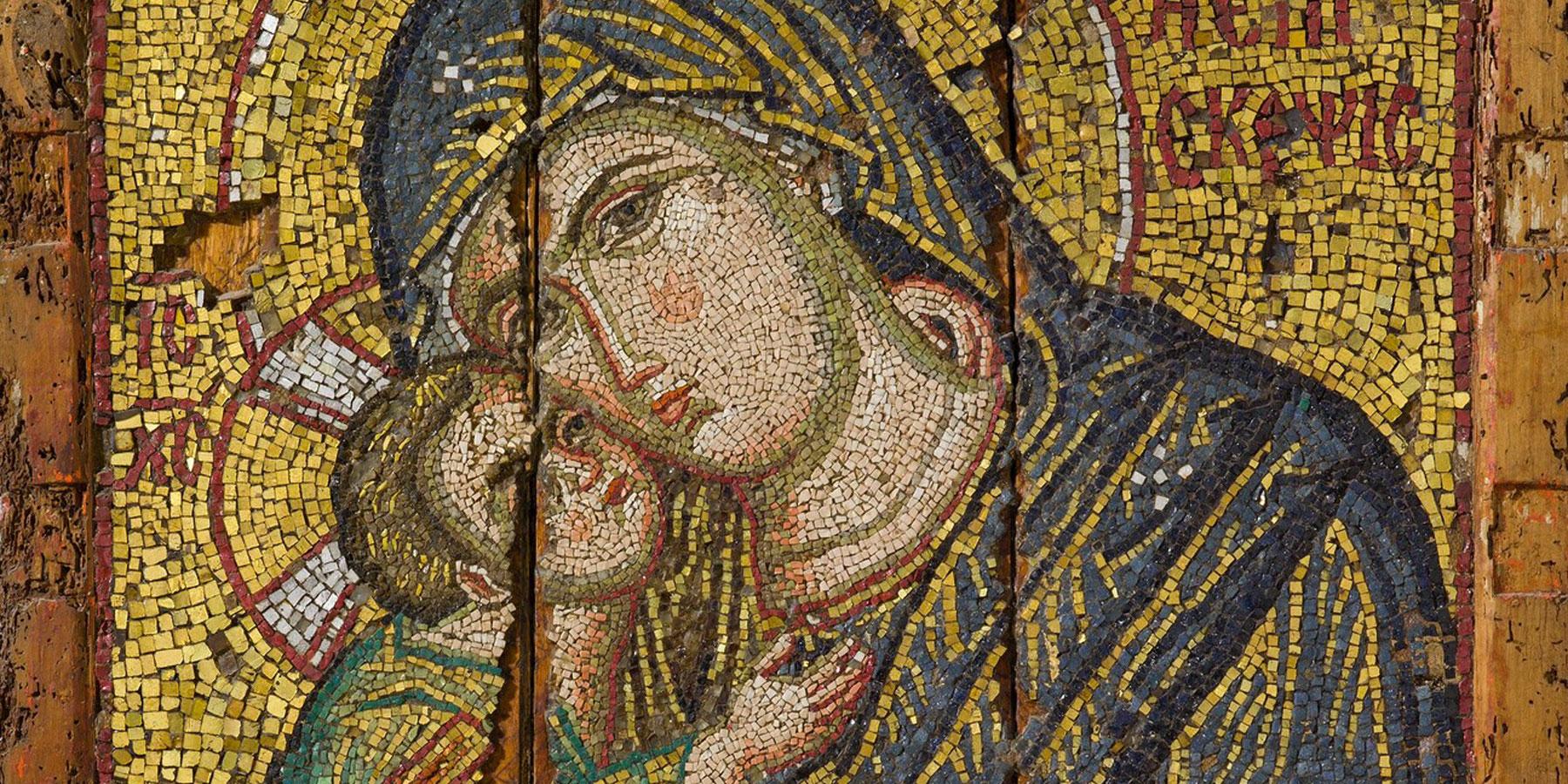The opposition to religious images known as Iconoclasm began during the reign of Leo III (717–741), but may not have become official policy until his son Constantine V banned the making of icons in 754. The prohibition was lifted from 787 to 815, but reinstated thereafter. Mosaics in churches of the time reveal that figurative religious images were replaced with plain crosses or geometric and foliate designs. After Iconoclasm ended in 843, writers opposed to the ban reported that huge numbers of icons had been destroyed, but their claims were likely exaggerated to discredit Iconoclast emperors.
Iconoclasm stemmed from the second commandment given to Moses (“Thou shalt not make any graven image . . . thou shalt not bow down before them”). As images of Christ, Mary, and saints appeared increasingly in churches in the sixth and seventh centuries, officials questioned their legitimacy, fearing that the veneration of icons was tantamount to idolatry. Iconoclasts (“image-breakers”) also emphasized the impossibility of depicting Christ’s divinity. The rise of Islam and the loss of Byzantine territories to Arab armies at the time would have added to concerns that God was on the side of those who forbade holy images.
Supporters of icons argued that denying images of Christ wrongly denied his incarnation and presence on Earth, a view that ultimately prevailed. After the restoration of religious images in 843, the production of icons in all media exploded, with many emphasizing Christ’s human nature and physical suffering.
